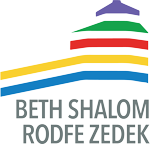
Parashat Ki Tavo: Blessing/Curse, Light/Dark
Both our Torah and Haftarah portion are focused on dichotomies. Parashat Ki Tavo (Deuteronomy 26:1-29:8) describes a ritual in which the Levites will proclaim potential blessings and curses to the Israelites, and they must reply, “Amen!” in acknowledgment. These blessings and curses go into great detail as reminders of the consequences of our actions. The stakes are high, and the long-term impact of the Israelites’ choices are laid out for all.
Our Haftarah portion, Isaiah 60:1-22, is the fifth Haftarah of Consolation (of seven, before Rosh Hashanah). The tone is hopeful, inspiring, and filled with faith in God’s deliverance. The key dichotomy used here is light and dark.
Central to both our Torah and Haftarah texts is the idea of CHOICE – we have the power to choose our behavior, our observances, our ethics. We can choose education, information, righteousness, and justice. We can choose pathways that lead us toward the light and toward redemption. Likewise, we can choose cruelty, inequality, injustice, and ignorance. We can choose darkness or destruction. Our choices are our own; the subsequent consequences and ramifications are what they are. The High Holy Days approach, and these choices become much more pressing. How have we gone about these kinds of choices in the past year? How would we like to proceed into 5778?
The following is a lengthy, but profound, philosophical commentary on the concept of light and dark throughout much of the Bible. These simple ideas of light and dark can be viewed, as I’m sure you’d guess, as metaphorical on many levels. As you’ll see, in addition to many other Biblical references, verses from our Haftarah portion are included in this discussion. It is an excerpt from Akeidat Yitzchak, a 15th century Spanish rabbinic commentary written by Isaac ben Moses Arama (c. 1420-1494). I hope you enjoy, and I look forward to incorporating these ideas into our discussion this Shabbat.
In order to make use of one’s eyesight, light is indispensable. Even possession of perfect eyesight is useless, since one is unable to translate one’s potential into the actual, unless the objects to be seen are bathed in light. None of our other senses requires external phenomena to enable them to function. One can smell in the dark, touch in the dark, etc. Because the sense of vision requires light in order to function, light is also called “wisdom,” seeing that wisdom is also an external agent assisting all our senses to improve the quality of their respective perceptions. G’d the great “Seer,” is different inasmuch as He does not require light to enable Him to see and perceive all that exists. Whereas photography cannot function when outside light penetrates the viewer, the Almighty, the seat of light, who is surrounded by light, is not handicapped by that fact. Daniel 2, 22, says “He knows what is in darkness, though surrounded by light.” Isaiah 60,1-2, says “though the earth will be surrounded and covered by darkness, the Lord will light you up. His glory will be visible to you.” This “glory” will not be visible to other nations. The fact that the account of the story of Creation commences with the creation of light, illustrates the point that in order to build successfully, one must be able to see what one is doing. Though night is no darker than daylight for the Almighty, the point was to describe the inescapable need for daylight for man to be able to live on earth successfully. For this reason, we read at the end of the story of creation “G’d saw all that He had made and it was very good.” (Genesis 1,31.) Until He had viewed it, it could not have been described as “very good.” Solomon also describes the relationship of light to darkness as like the relationship of wisdom to foolishness, explaining that the fool, though he sees, walks in darkness, whereas the wise, even though blind, carries the source of light in his head. (Kohelet 2,13-14) Since Torah more than anything else has been designed to provide wisdom, the verse “for each mitzvah is like a candle, but Torah is light itself,” (Proverbs 6,23) is self explanatory. When Moses says to Yitro “you will become our eyes,” (Numbers 10,31) he had this kind of vision in mind, i.e. one which provides spiritual light, wisdom. The fact that the members of the Jewish Supreme Court, the Sanhedrin are called “the eyes of the community,” (Horiot 5) is to be understood in the same vein. Basing ourselves on this comparison between eyesight and wisdom, the Torah’s statement that Joseph’s interpretation of Pharaoh’s dream was “good in the eyes of Pharaoh and in the eyes of his servants,” is clear. It means that people who had up to now walked in darkness, suddenly were greatly enlightened. (Genesis 41,37) In the final analysis, providing spiritual enlightenment to those walking in spiritual darkness, is what the interpretation of dreams is all about. The ability to relate apparently unconnected phenomena to one another, is what foretelling of the future amounts to. When Joseph had said to Pharaoh’s ministers who were in jail with him, “is not the interpretation of dreams G’ds business?” (Genesis 40,8), or when he said to Pharaoh “may the Lord put Pharaoh’s mind at ease,” (41,17) this underscores that only someone possessed of qualities especially conferred upon him by G’d, could succeed in interpreting dreams. Our sages in Berachot 25, appear to contradict this theory when they state that “all dreams follow the mouth.” At first glance this seems to mean that the interpreter of a dream determines its meaning and significance although logic dictates otherwise. When the Torah says that Joseph explained each man’s dream according to its dreamer, surely this means that each dream allowed for only one explanation. How then can our sages allow latitude to the interpreter to impose his own meaning? Strangely enough the Talmud reports two identical dreams that permitted widely divergent interpretations. Still more strange is the statement of Rabbi Neriyah (Berachot 56) that the twenty four interpreters in Jerusalem offered twenty four different interpretations for the same dream, all of which turned out to be true.
Because of all the foregoing, we believe that the approach to dreams is dealt with by Elihu in Job chapter 33. “G’d speaks to man during a dream, a nocturnal vision; when deep sleep overcomes man, when he rests on his couch. Then the Lord does open the ear of man and impresses him with His teachings.” Elihu refers to three different levels of enlightenment conveyed by means of dreams.
1) The prophetic vision, chizayon laylah, the type of dream granted to many of our prophets. Normally, the purpose of these visions was to prepare the prophet or his people for coming events.
2) A second level of communication, commonly referred to as ruach hakodesh, holy spirit. This is inferior to the nocturnal vision described previously. During this kind of communication, the dreamer usually loses most of his normal faculties. This sort of communication is described in greater detail by Daniel 10, 8-10. We also find Abraham being the recipient of such a communication during the early stages of his career, at the brit beyn habtarim, covenant between the pieces. (Genesis chapter 15) The above mentioned two levels of communication from G’d were reserved for the Jewish people exclusively after the erection of the tabernacle in the desert. (see details in chapter 82)
3) A third and lowest level of communication from G’d, is one that is common to all men who dream of many things while they are asleep. Some of these dreams are of no significance whatsoever, simply reflect thoughts that are carried over from one’s waking hours; others are thoughts suppressed during waking hours, which can no longer be controlled while one is asleep. Some parts of these dreams may have substance however, and may have deeper meaning. In some cases an insignificant part of the dream contains something meaningful. In others, the proportion of the meaningful part may be very substantial. Job 33,15, then is to be understood like this:
A) in a dream of nocturnal vision.
B) when deep sleep overcomes man.
C) while sleeping on the couch.
When our sages state that dreams equal 1/60 of prophecy, (Berachot 57) they mean that the element of truth in a dream may be as insignificant as the amount of issur forbidden ingredient, that can be assimilated in a large mass of permissible material. Since every person has a chance to receive revelations of such minute proportions, Elihu says “then He reveals to the ear of men.” The fact that all kinds of subject matter may be contained in the dream, creating a picture of confusion, prompts the dreamer to consult an interpreter to sort it out for him. It is this that Elihu means when he adds “and He seals their instruction, that He may draw man away from his purpose.” The art of the interpreter is to separate the message from the trivia contained in all dreams. It is this that Pharaoh referred to when he said to Joseph “you hear a dream (with a view) to interpret,” (41,15) i.e. you possess the insight to weigh what is pertinent and what is not.
Since several elements in a dream may contain revelations pertinent to the future, an interpreter may isolate only one of these elements, overlooking the other. This is most likely what the Talmud means when it tells us of twenty four different interpretations of the same dream, which each proved true but incomplete. The Zohar on Parshat Vayeshev relates a conversation between three Rabbis, from which it becomes clear that if an unexplained dream compares to an unread letter, that it is not the reading itself that makes it come true, but, that having read it, one becomes alerted to the fact that it has come true. This then is the meaning of “all dreams follow the mouth,” not that the latitude granted the interpreters determines the cause of events. When Joseph said “do the interpretations not belong to the Lord?”, he meant that even if G’d has endowed someone like himself with the insight to elicit a message from this dream, there may well be additional interpretations which would become clear only in later generations or even in subsequent eras. If this were not so, Joseph would have used the word “interpretation” in the singular. Since Joseph’s own dreams foreshadowed events in the near future as well as events in the more distant future, any interpretation would not have to be exclusive of other meanings. One of the prerequisites of success when interpreting dreams, is the knowledge the interpreter has about the dreamer himself. Not all dreamers will interpret identical dreams identically. (compare Yuma 87) Rabbi Chanina dreamt that Rav had been hung on a palm tree. He took this to mean (knowing Rav’s stature) that Rav would be appointed head of the academy. Had he dreamt the same thing about a robber, no doubt he would have interpreted such a dream completely differently.
Shabbat shalom!





